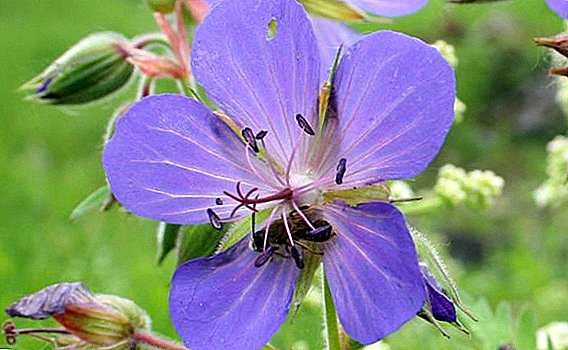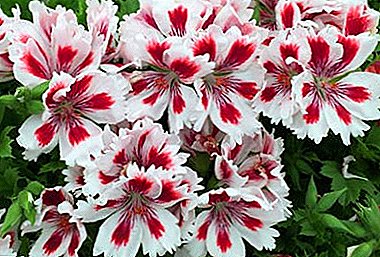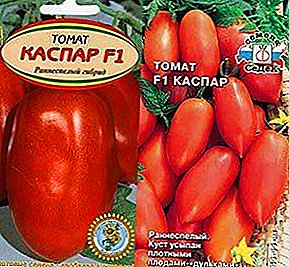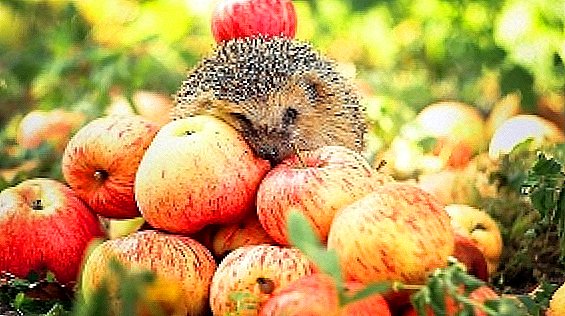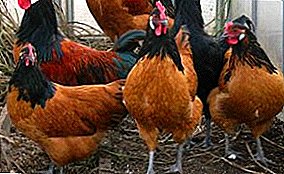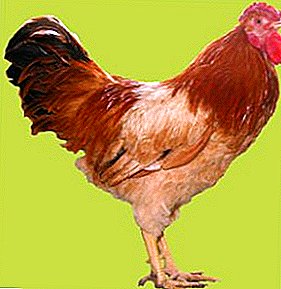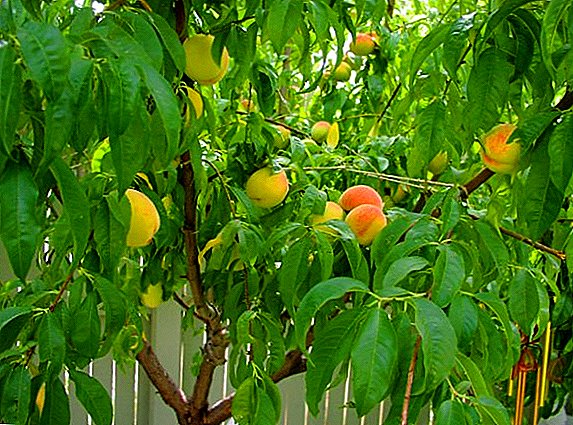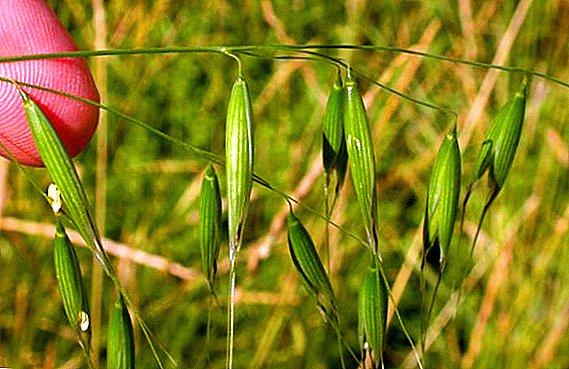 Wild oat (wild oats) is one of the most vicious weeds, which perfectly adapts to any environmental conditions and is a relative of common cultural oats. It blooms in early summer among the crops of most crops, but it is most often found where spring grain crops grow. Having gone through a long process of evolution, wild oats today surpass many other weeds. To date, there are 8 species of this plant: common, northern, long-fruited, thick-fruited, bearded, barren, southern and hairy.
Wild oat (wild oats) is one of the most vicious weeds, which perfectly adapts to any environmental conditions and is a relative of common cultural oats. It blooms in early summer among the crops of most crops, but it is most often found where spring grain crops grow. Having gone through a long process of evolution, wild oats today surpass many other weeds. To date, there are 8 species of this plant: common, northern, long-fruited, thick-fruited, bearded, barren, southern and hairy.
What does a weed look like
It is difficult to recognize these plants immediately, since this weed looks very similar to ordinary oats. But, in contrast to the seeds of cultivated oats, the seeds of oats, joined by a horseshoe at the base, ripening acquire a dark, almost black shade. The knee-shaped bend of the wild oat spines and the shape of the helix, which they acquire by twisting around their axis, are also the hallmarks of the fact that there is a weed in front of you, and not a crop.  Wild oat has a well-developed, fibrous root system, which penetrates the soil to a depth of 150 cm. The bare stem of the plant reaches 60 to 120 cm in height, which also distinguishes it from cultivated oats, whose stem is much lower. The leaves of the oversized broad linear, up to 30 cm long, ciliate along the edge, have a tongue.
Wild oat has a well-developed, fibrous root system, which penetrates the soil to a depth of 150 cm. The bare stem of the plant reaches 60 to 120 cm in height, which also distinguishes it from cultivated oats, whose stem is much lower. The leaves of the oversized broad linear, up to 30 cm long, ciliate along the edge, have a tongue.
Did you know? The grains of fat oats are almost impossible to distinguish from the grains of cultivated oats, since they have the same shape, weight, size, color of scales. This creates great difficulties in the fight against wild oats and the separation of its grains from the harvest of other crops.
In the description of common oats, it is important to pay attention to the inflorescence and grains, with the help of which the plant propagates. Inflorescence is an oblong panicle consisting of three balls. The seed of wild oats is enclosed in floral scales and falls off with them. The membranous weevil is spindle-shaped or oval-shaped. One such plant produces up to 700 seeds.  Oats are propagated only by seeds. One panicle forms 2 types of grains:
Oats are propagated only by seeds. One panicle forms 2 types of grains:
- Bottom - large bright grains, which make up 70% of the total number of fruits. They peel off later and clog up the material for planting. Rest period - 3 months.
- Above - dark, small grains, which have a dormant period of up to 22 months and fall off earlier, rising from a depth of 10-12 cm.
Maturation of panicle tiers occurs unevenly and they peel off alternately: from top to bottom. Such a mechanism causes the shedding period - about a month. Therefore, to get rid of the weed, just mowing it, is impossible, because a certain number of seeds will still be on the ground.
Learn how to deal with horsetail, thistle, snyyu, dandelion, nettle, birch, euphorbia, dodder, quinoa, parrot, purslane on the site.
When the seeds of oats are showered, they do not require certain conditions in order to start digging the weevil into the ground. It’s enough for light rain to fall. The mass reproduction of oats is promoted by the seeding of cultivated plants of the same soil for several years without a break. 
Harmfulness
Having determined what an oat is and how it looks, you should highlight it malicious properties:
- Soil blockage and depletion. One of the features of the oat is the rapid ripening of grains. Due to this, its seeds begin to crumble before the harvest of spring bread, strongly littering the ground and grain. The degree of clogging depends on the number of grains that had time to form, their characteristics, time of ripening and shedding. Since medium and small grains get poured before large ones, they clog up the soil. Since this type of weed absorbs one and a half times more moisture than grain crops, under its influence the soil is depleted, this can harm crops for several years, especially in drought.
- Clogged harvest. Larger grains remain in the spikelet longer (30-40 days), so when picking and threshing the harvest in the bunker and in the seed material, it is more often large grains of wild oats that are found. When the number of wild oats plants exceeds 50 per m2, the grain yield of grains drops by 20%. There are cases when the number of oat grains in a crop is 20 times the amount of wheat seeds. Weed seeds are very difficult to separate from the seeds of cultivated oats or barley. Consequently, the small seeds of the oat spoil the soil, and the large ones - the seed material. The quality of grain mixed with oat seeds is significantly reduced: in an unmilled grain of wild oats, due to its tough hairs and coarse spines, feeding their pets can cause inflammation of the respiratory tract and mucous membranes; admixing its grains, wild oats reduces the quality of the grain used for food purposes, reduces its value in the market: oat grains, mixing with wheat grains, give the flour a dark tint and tart taste.

Important! Wild oats become harmful to animals only after the formation of a panicle. Ovus, mowed before making panicle, produces the same hay as oats and can serve as a good feed for livestock.
- Attracting insects (Swedish flies, thrips, smut, nematodes) that harm wheat and other crops.
- Reservation of various diseases.
- Damage to wheat varieties. Hybrids or hybrids of wild oats with its selection of varieties, as a rule, in the first years do not differ from ordinary oats, but over time they are split, real oatsuzhnye plants are separated, their grains crumble and litter the ground. So weed is distributed where previously it was not.
Control measures
Since the harm of this weed is significant, the need to combat it becomes obvious. In order to determine how to deal with one of the most harmful weeds, it is necessary to establish the reasons for which it multiplies and appears in places where it was not before.  Factors contributing to the emergence and spread of this plant:
Factors contributing to the emergence and spread of this plant:
- Non-observance of fruit changes in crop rotation: the absence of anti-erosion units in it (winter wheat - sugar beet - millet), growing for a long time one type of crops.
- Sowing winter soil after crops that are late harvested.
- Lack of clean steam.
- Improper plowing and tillage.
- Lack of tierrovaniye when cleaning seed.
- A large number of oat seeds in the soil.
- Improper storage of manure, which is used to fertilize the soil.
There are several popular proven methods that are used to get rid of this weed: they use both agronomic and chemical methods.
Did you know? Wild oat is most dangerous for crops that are sown in the early stages. The economic threshold of his harm: in winter wheat crops - 20 pcs / m2, spring crops - 16 pcs / m2, when contamination is 50 pcs / m2, the yield is reduced by 20%, with 300 pcs / m2 - four times, with 450 pcs / m2 - five times or more .
Agrotechnical receptions
- Correct (pentapole) crop rotation. Cultivation of herbs, crops which do not contribute to the reproduction of wild oats.
- Compliance with the standards of storage and preparation of fertilizers for the soil.
- Seed filtration with the use of an Oryus trimer with different cell diameters for different crops, cleansing the machinery and equipment used when working in the field.
- Destruction of wild oat shoots by spring processing before sowing crops using the method of provocation (closing of moisture, application of mineral fertilizers, as a result of which the oats appear earlier and can be uprooted by the next pre-sowing cultivation).

Effective herbicides
The chemical method of weed control is used in addition to agricultural practices and is effective for the destruction of osyuzhnyh plants. It is necessary to use herbicides with caution and only when the number of weeds exceeds the measure at which mechanical techniques are applicable.
Before cultivating land with crops, it is worthwhile to carry out a phytopathological examination of the fields, which will determine whether chemicals should be used. This is done not only to avoid chemical effects on the crop, but also in order to save, because using herbicides is quite expensive and there is no sense to spend money if you can cope with the help of agrotechnical techniques.
Important! For effective control of large quantities of oat crops, it is better to use preparations of continuous action, which contain glyphosate as a basis.
You can fight this plant with the help of such herbicides:
- Avantix Extra (spraying of crops in the first phases of weed development);
- "Axial" (processing in spring from the phase of 2 leaves and until the end of the tillering of wild oats);
- "Dope" (spring spraying in the early phases of weed development);
- "Eraser Extra" (processing in the early stages of the development of oats);
- "Polgar" (spraying in the spring over vegetative weeds, starting with the phase of two leaves and until the end of tillering);
- "Topic" (spraying in the spring in the early phases of weed development).
 The use of these herbicides against oats, like most others, is not determined by the degree of development of the culture, only the degree of development of the weed matters here.
The use of these herbicides against oats, like most others, is not determined by the degree of development of the culture, only the degree of development of the weed matters here.Herbicides are applied to weed control: Roundup, Ground, Prima, Zencor, Agrokiller, Stomp, Lontrel-300.
The harmful weed - wild oat, which looks very similar to ordinary oats, harms not only the crop of crops, near which it multiplies, but also the soil, drying it and depleting it. It is dangerous for animals and attracts insects that can harm other crops. You can fight this plant using agrotechnical techniques or chemicals. When planning the spraying of crops with herbicides, it is important to make sure that it is really necessary and mechanical methods do not help.



